Sherlock Holmes in the 22nd Century (1999)
Originally posted on 04 October 2025First episode title: The Fall and Rise of Sherlock Holmes
How familiar with the show am I?: I hadn't heard of it, but obviously I have heard of Sherlock Holmes!
The world's most famous detective, Sherlock Holmes is inextricably associated with Victorian London. This cartoon explores the question - what if he was resurrected in the future? I'm not sure if it was a question anyone was asking, but still, it's intriguing.
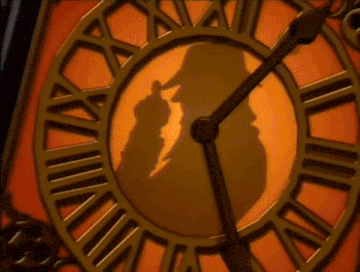
From the opening sequence - is it redundant for me to mention every time a show has a catchy theme song? - it's clear what the style of the show is. Traditional 2D animation for the characters and most backgrounds, but CGI for the futuristic cityscapes complete with flying vehicles and a 3D Big Ben. So, it does look like we're still in London. It does amuse me when late 90s shows use 3D animation for the parts that are meant to look more impressive, because the CGI from back then looks so primitive now that the 2D parts tend to be easier on the eye.
The episode title card introduces the episode in full as:
"The Fall and Rise of Sherlock Holmes", inspired by "The Final Problem" by Sir Arthur Conan Doyle
So, I suppose there are some amount of episodes based on specific stories from the Holmes canon. The Final Problem is famously the Sherlock Holmes story that was intended to kill the character off, with he and his enemy Moriarty both seemingly dying at the end of the adventure, but public outcry to bring him back eventually forced Doyle to write more stories and explain his survival. The existence of a story like that in canon is an obvious thing to allude to if you're going to be resurrecting Holmes again - hey, maybe it was even part of the inspiration for the show!
The opening section is narrated by Dr John Watson himself, and the year at this point is 1891. In case you're really unfamiliar, almost all the Sherlock Holmes stories are written from Watson's point of view, with the conceit being that he is publishing his own personal journals for public consumption - we're obviously meant to be hearing an extract from one of those diaries. So here we get to see 19th century London, which is also portrayed in CGI like the future one. This is just to give us the flavour of the time period, though, because we then cut to the actual location where Holmes and Watson currently are, on the Swiss Alps, over Reichenbach Falls, the waterfall where the famous battle between Holmes and Moriarty occurred in the original story.
Holmes and Watson look very much as expected, Victorian men in bowler hats (Holmes rarely wore the famous deerstalker in canon), currently dressed for hiking, Holmes being tall and thin and Watson being a rounder man, although not to an exaggerated degree, and who wears a monocle in this version. Watson's narration very quickly gives away that this show was written by an American, because he says that he and Holmes were in the Alps "on vacation", rather than "on holiday". I had a scan through the actual Final Problem story to see if this is maybe one of those terms that used to be common in Britain but is seen as American these days, but no, that story seems to have no mentions of vacation and does call this trip a holiday.

As they walk along a narrow path over the waterfall, an old man runs up to them, described as a messenger from the lodge where they're staying. The guy has a very over the top Cockney accent (I should say that the English accents in this are generally good) and says that Watson is needed urgently back at the lodge, as a woman has fallen ill and Watson is the only doctor around. Holmes has clearly spotted something odd here and asks Watson what he thinks of the situation, who is surprised by how fast such an old man had moved, but since the old man seems to be winded Holmes tells Watson to go on ahead to the lodge while Holmes helps the old man.
The moment Watson is out of the way, Holmes addresses the old man as Professor James Moriarty, and the man drops the act, switching to a less fake voice and tearing off a wig, beard, and apparently a false nose, although it's not very clear in this shot. Moriarty has black hair with a white streak through it and one of those beards with a bit in the middle and then more at the sides - not an attempt to recreate book Moriarty at all, but a very distinctive look of its own. He asks how Holmes worked it out, and Holmes says he used his eyes and his brain, which becomes a recurring phrase for him in this story. As well as how fast the old man moved, Holmes noticed that his clothes are too small due to being hastily picked as a disguise, that he was sweating through his old man make-up, and that no-one else at the lodge actually knew that Watson was a doctor.
Moriarty takes a bludgeon from under his coat and rushes at Holmes, who defends himself with his walking stick, and the noise of their fighting attracts Watson's attention. So he's looking towards them both when the inevitable happens: Moriarty forces Holmes off the edge and into the falls, but also goes down with him. We see a close-up of Watson's journal as he narrates these final moments, and a tear drips onto the manuscript.

Watson: The world had lost its greatest detective, and I, my best friend. ...Or did I?
The latter part being said as the scene fades out, not intended to be part of this particular journal. There is something odd going on with what we see of the journal, though. The part the tear drops on appropriately says "and I, my best friend." and by that point, the camera is fully zoomed in to those words. But while it's still zooming, we can see some of the other words, and they do not match the narration... it's not all particularly clear but part of it seems to say "The chimpanzees screamed[?] when little Watson was born. They crowded around to get a close look at the new man. Chimp[?] did not mind." My first thought was that it was some kind of distortion of an actual extract from a Sherlock Holmes story, but none of my searches turned up anything, so if this means anything to you, please let me know!
Fade to the futuristic London we saw in the opening, with Big Ben and flying cars and all. Tower Bridge is surrounded by multicoloured skyscrapers. A police car is chasing another vehicle through the air, while a more robotic male English voice tells us that this is New London (did they move all these London landmarks to a new location?) in the year 2103, in what seems to be a running police report or commentary on the action as it happens, telling us they're chasing after a Martin Fenwick who has violated his parole by not showing up for "crypnotic programming renewal", and is driving a stolen vehicle.
The police car's driver is a woman with an American accent. As the stolen car swerves, the robotic voice warns her "collision imminent", wording things in a typically robotic way, and she turns the car upwards but still takes a chunk off the hat of the Nelson statue, which is still standing on Nelson's Column after all this time. The robot says he will have to report the damage to New Scotland Yard - that one's not a "it's New because it's futuristic", as the London police headquarters was called that even in Arthur Conan Doyle's time - and the officer sarcastically responds "Thanks, Watson". Hmmm, interesting.

Her voice amplified - perhaps the police car has a built-in megaphone - the officer identifies herself as Inspector Lestrade (the same surname as the police officer in the Holmes stories, who you may have guessed was male) and tells the criminal to land, and then a little gun thing pops out of the bottom of the police car and shoots down the stolen vehicle instead, making it crash to the ground upside down. I suppose police officers never change. Martin Fenwick crawls out of the vehicle - he has pale white skin and bright orange hair but balding on top. He also has a French accent. He talks to someone we can't see who must still be in the vehicle.
Fenwick: Go, master! I'll draw her fire!
And just as he says, he goes running away, and as soon as Lestrade leaves her vehicle she fires at Fenwick, although it's not with intent to harm this time - a laser blast envelops Fenwick and becomes some glowing green restraints that hold him in place. As Lestrade is leading him away, she's surprised to hear the crashed vehicle start up again. She looks around, and in the car she sees, somehow, Moriarty! She exclaims his name, so she is clearly familiar with the events of Holmes's time already. He laughs and the vehicle flies away.
In the next scene, Lestrade is in an office being shouted at by her boss, a man with grey hair and a moustache, who has a Cockney accent but a reasonable, non-exaggerated one this time. His name is Chief Grayson, which is interesting, because the Lestrade in the stories had a colleague called Gregson - I wonder if this is something intentional, perhaps to allude to that character while trying to mitigate the coincidence of having so many characters in the future with the same names as characters in the past. He's yelling about all the property damage that occurred during the car chase, including to Nelson's Column. Lestrade's counter-argument is how important it was to catch Fenwick to find out why his crypnotic programming hadn't worked - he just tells her to go and talk to the science division about that.
So we next see Lestrade in a dark room, presumably the science division, where Fenwick is strapped into an ominous chair covered in lights and wires, and a female robotic voice counts down to the "criminal tendencies re-programming". This is of course what "crypnotic" has been referring to, and it sounds extremely unethical, but this episode doesn't dwell on that at all. Lestrade is standing next to a robot with a single red eye - this is the Watson she talked to before. Remember how the human Watson was portrayed with a monocle? Now we know why - to add a little bit of visual similarity between the two Watsons. Lestrade has Watson record a memo to Grayson about the crypnotic programming, that the science division are blaming the issues on a computer glitch but Lestrade reckons someone must have hacked the system.
Fenwick, while the chair seemingly gives him electric shocks as part of the programming, laughs that nothing they do can stop him, but then one final shock seems to switch his personality, politely telling them "merci" for what they've done to him. Watson thinks the crypnosis was successful, but Lestrade thinks Fenwick is faking the switch. Of course, at this stage she has no proof - it's not spelled out in this scene, but we can assume that Fenwick is set free thanks to having been "cured" of his criminality.

So that's why in the next scene Lestrade and Watson's vehicle is stealthily tailing Fenwick down a street. Watson explains that the building Fenwick enters is 221B Baker Street, the site of the Sherlock Holmes Museum. This is a lovely little in-joke. In the Holmes stories, Holmes and Watson lived at 221B Baker Street, an intentionally fictional address as Baker Street's house numbers didn't reach that high at the time. The street was later extended in real life, and there is now a Sherlock Holmes Museum on it with special permission to use the 221B address despite that not quite matching where it is. In this universe where Holmes really existed, of course, none of this can be the case, so this must be his actual house, having been turned into a museum at some point since the famous detective died.
Watson says the museum has been closed for a while due to lack of funds, so what does Fenwick want from it? We get the answer immediately - he approaches a case containing a mannequin head wearing the wig, beard, and nose that had been Moriarty's disguise at Reichenbach Falls. We see him smash the case, and then we next see him dashing out of the museum, pushing past Lestrade and Watson who were about to walk in. Watson shoots another restraining laser at him but it misses, and he rushes down a set of subway stairs. Watson stops Lestrade from going in, because of a police rule that an unaccompanied officer cannot enter the Underground area without permission. Presumably the Underground is no longer an actual subway system since the advent of flying cars and has become derelict and dangerous - Lestrade says she wouldn't go down there anyway because of the rats, and a rat crawls past the screen to prove her point. But what's so scary about rats? It even makes a cute squeaking sound!
So the pair go back to the museum to see what Fenwick stole. In the smashed cabinet, there is still an exhibit card explaining about Moriarty's disguise. Lestrade asks Watson his opinion, obviously hoping to figure out why Fenwick would steal something like that, but Watson instead answers as if she was asking how Fenwick stole it, explaining about the inadequate security at the museum. To demonstrate to us one little difference about this future time, he also mentions that the case has "obsolete non-shatterproof glass" - so everything that gets made of glass in their time is very hard to break? Then Lestrade notices a photo or portrait of Moriarty on the wall and is still convinced that this is who she saw in the car with Fenwick.
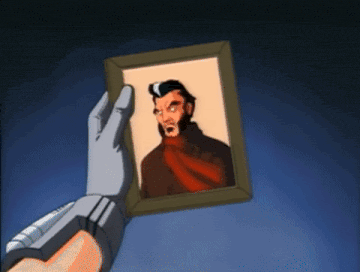
Next, Lestrade and Watson are in what I guess is Lestrade's house in daytime, Lestrade sitting at a futuristic computer the size of a whole desk. Did no-one tell them technology gets smaller as it improves? It's displaying images of Moriarty, in normal and old-man-disguise forms, while Lestrade talks about her confusion at having apparently seen a man who died over two hundred years earlier. And then the computer prints out a picture of Moriarty. Did no-one tell them the idea of a paperless office either?
Still, the next thing that happens is an interesting display of future technology. What's on the screen is replaced with a newsreader who says "Breaking news" and gives a headline about the recent issues with crypnosis, and then she says "Details on demand" and Lestrade says "More", at which point the newsreader continues the story. This would suggest either that this is an AI that just uses the appearance of a newsreader, or that a real newsreader just now recorded this story including the "Details on demand" bit and some standard process broadcasts it and gives everyone the option of individually choosing whether to see the rest of the story. Still, you wouldn't really want it suddenly replacing what you're doing on the screen unexpectedly!
The report shows us that Fenwick's case isn't isolated, with other recent crimes being committed by people supposedly under crypnosis. Then, very fortunately for the story, there's another news story about a scientist called Evan Hargreaves who thinks he has made it possible to revive dead human cells. Lestrade decides she's going to have to talk to him, obviously suspecting him regarding Moriarty's reappearance. She notes that the Holmes diaries describe Moriarty as the world's greatest codebreaker, which would explain how a resurrected Moriarty could have broken crypnosis - she says "Thank you, Watson," and her robot sidekick is confused, so she has to clarify that she was thanking the human Watson for recording that information.
Lestrade goes to Grayson with the Moriarty theory... and Grayson thinks she needs psychiatric help. Lestrade says that the man she saw definitely looked like Moriarty, and Grayson, to demonstrate that appearances can be deceiving, puts on a hi-tech mask the police technicians had made, giving his head the appearance of an old lady. Watson lets Lestrade know the stolen hover-car has been recovered, and when Grayson next talks he has a helium-sounding squeaky voice that shows the disguise isn't all that effective. He tells Lestrade to stop calling the "compu-droid" Watson, because it's just a thing, and then struggles to remove the mask as the others leave the room.
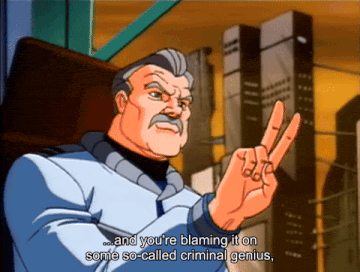
The officers at the scene with the hover-car tell Lestrade that unidentified DNA and fingerprints have been found in it - Lestrade video-calls Grayson (who's still stuck in the old lady disguise, which Lestrade mocks) and he can't believe that there is a person with unrecorded DNA, since it's the law to have it put on file. Along with the crypnosis, I do not like this dystopian vision of the future, since this episode at least does nothing to portray it as bad. Lestrade retorts that it's only been the law for the last hundred years, so someone born over two hundred years ago would not be on file...
A wide shot of the city transitions from daytime to night-time, and it makes it clear that the various bright colours of buildings we've seen in other shots of the city at night were due to actual coloured lights around the city, because the colour schemes are completely different (and less glowing) at daytime.
While breaking into a warehouse building (it looks like the actual intended entrance button isn't working), Lestrade uses Watson to record another memo, going through her thoughts: Moriarty seems to be back, and this would explain the stolen disguise, because it would have Moriarty's DNA on it and link him conclusively to the car wreck. That makes sense but also doesn't - in this world where DNA scans are commonplace enough to be compulsory, it seems weird that the items stored in a museum would never have been scanned before, especially to have a record of the DNA of someone like Moriarty, not for crimefighting purposes but just for the sake of the record.
Anyway, the conclusion of her memo is what we've been waiting half the episode for - the only way to defeat a resurrected Moriarty is to bring back Sherlock Holmes himself. She says this as she approaches an upright casket in the warehouse, with a window showing us that it contains an elderly Holmes in some kind of fluid. Lestrade explains to the robot Watson about how everyone once thought Holmes died at Reichenbach Falls, but he actually died of old age a long time later. That's all well-established Holmes canon, but obviously a viewer of this show who's new to Holmes would need the clarification, given what we saw at the start. They leave the warehouse, and Lestrade tells Watson she has more to add to that memo but Watson says he's already sent it, triggering a rant from Lestrade.
Lestrade: Argh, have you lost your holo-chips, Watson?
Watson: Negative. All holo-chips present and accounted for.
Lestrade: Get in the cruiser, you worthless bucket of zed!
Grayson also used "zed" like it was a swear word earlier, but given his English accent it could've just been the letter Z - Lestrade saying it too makes it clear it is in fact "zed". Is it short for a longer swear word? Zarquon?
Their flying car takes off, tugging the casket behind it, and we next see Lestrade at Hargreaves' lab, to revive Holmes. She convinces him to help, although it's made clear this is at least partly to prove he's not on Moriarty's side. Hargreaves mentions it's lucky that Holmes's body was preserved in honey, without any justification as to why anyone in his time would have done that - unless Holmes himself somehow foresaw a future where resurrection technology would be possible, and planned for this exact possibility?

In a round tank in the lab, Holmes is already looking rejuvenated - his hair has gone from grey to brown, and his body is surprisingly muscular. Hargreaves pulls a lever and Holmes body twitches and audibly grunts. Lestrade, looking up at the nearly-naked muscly man, remarks that he's "incredible". She hasn't seen his mind in action, so she can only be referring to his body...
Fade to later in the process, where Holmes is now lying on a table, opening his eyes for the first time. Lestrade says "Sherlock?" and he immediately responds "At your service." That's some quick regaining of faculties for someone who's been dead for so long!
Lestrade: Welcome to the twenty-second century, Holmes!
Oh hey it's the title of this thing. Cut to slightly later and Holmes is looking at some kind of gold and red object in his hand, asking "You call this food, Inspector Lestrade?" I'm not sure what kind of food it's supposed to be either. Lestrade is surprised that Holmes knows her name, and Holmes explains about how he knew her ancestor and there is a clear family resemblance... and also she's wearing her police badge. The question of why a descendant of the original Lestrade would have an American accent never comes up in this episode, although obviously there are plenty of plausible explanations - the fact that she's moved back to her family's original home of London is interesting, though.
Another timeskip and Lestrade, Watson, and Holmes are leaving in the hover-car, Holmes now dressed all Holmesy, including the deerstalker this time. He surmises that there's some kind of crime wave or else no-one would have had the idea to bring him back. He also asks about the robot - Lestrade tells him about Watson, but also says she's turned him off because he reports everything back to New Scotland Yard. So she clearly knows this whole Holmes thing won't be received well...

We've looped back around to night-time again - how many days does this episode span, anyway? - and Lestrade and Holmes are in Lestrade's house at that big computer, as another breaking news story reports even more crypnosis failures. Lestrade wastes paper by printing off another copy of the Moriarty picture just to dramatically show it to Holmes. He's of course shocked that Moriarty could be behind anything, saying he even saw the burial. Lestrade is in turn shocked that the great Sherlock Holmes would jump to conclusions so quickly. Then she says he can learn about the time he's now in with a "holo-learner", a device she hands him attached to some goggles that it seems plays 3D educational videos, which are stored on triangular discs. I guess this show never saw the rise of downloadable media coming. She tells him she expects the "world's greatest detective" to be caught up to the present day by the time she's home, and when she's gone, Holmes... demonstrates his Victorian-ness:
Holmes: Flying cars? Talking picture screens? Auto-learning devices? Women in charge? What's the world come to?

In the office of Grayson, who is of course back to normal by now given how much time has passed since the mask incident, Lestrade has obviously told him about Holmes because he's rejecting the idea. Lestrade threatens to quit and go to the media, give them an interview with Sherlock Holmes and highlight how the police turned down his help in such a crisis, and Grayson gives in and lets her use Holmes. Lestrade's badge gets tossed back and forth a bit while she's threatening to quit - it's an interesting triangular design with what look like bronze, silver, and gold portions. It's not obvious what part of it Holmes read her name off of earlier.
Back at Lestrade's place at what appears to be sunrise, Holmes is at the computer watching a news report about a resort called Galileo City which doesn't seem to come up again - random world-building, or part of a future episode? Lestrade walks in with Watson, introducing Holmes to the robot properly for the first time. Holmes makes a joke about the robot Watson having a similar protruding gut to the real one, and then Lestrade tells Watson to read the Holmes diaries while she and Holmes are out, hoping he will learn something from them. In case Holmes seems too flippant about his old friend, in the next shot of Lestrade and Holmes speeding along in the police car - well, not a shot of them, since the 2D and CGI don't generally mix, but a shot of the car - Holmes talks briefly about how much he misses the real Watson.
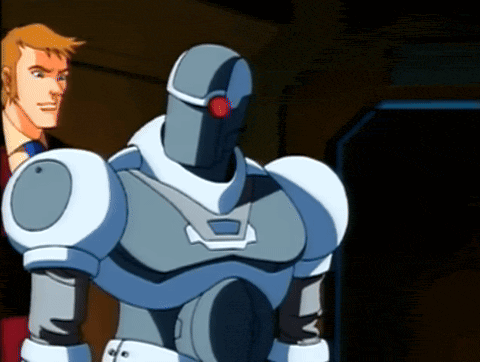
They arrive at the science division, where there are a bunch of technicians this time, as well as prisoners being put under crypnosis. While Holmes takes a look at the computer system, Grayson shows up, complaining to Lestrade that this revived detective doesn't look like much. Very quickly, Holmes announces that he has figured out why the crypnosis isn't working, and suggests that they follow the crypnotised subject who just left the building, leaving Grayson incredulous. There is a funny moment for Holmes where he points out he's pretty used to figuring out things that the police can't.
So that latest criminal runs down the street and gets in a hover-car, which Lestrade's vehicle (also containing Holmes and Grayson) follows. They spot that the driver of the vehicle is Fenwick, and Grayson wants to catch him, but Holmes' brain is way ahead of any of that - he says they need to get back to Scotland Yard right away, because the main computer is under attack, and that Lestrade better switch the vehicle to manual controls now. She doesn't have time to react before the hover-car goes into a sudden nosedive, so Holmes presses the relevant button to turn off auto-pilot before the car can hit the ground. He already knows an amazing amount about this era's technology, but then, I guess if anyone could learn this fast it's him. Holmes explains that a criminal with access to the force's master computer could mess with everything, from the crypnosis machines to the police vehicles.

The police car lands back at New Scotland Yard, which looks to have a huge hangar. The team get to where the master computer is, and two guards outside the room are bound by the same sort of laser that Lestrade used on Fenwick earlier, Sherlock declaring that the intruder must be in there in one of his less impressive deductions. He presses the button to enter, and Lestrade oddly gives him a warning not to go in because it's the "heart of the computer", as a blinding light comes through the opening door - the danger isn't clear as the room inside doesn't look like it's filled with anything hazardous, although it does have one of those typical sci-fi bridges with no railings over a pit that would become a hazard if you fell.
The intruder is using a remote control to operate some kind of drone that's messing with the computer systems. He's wearing what looks like a welding mask, but his hair is clearly visible so it's obvious it's Moriarty. When Holmes and Lestrade enter, Moriarty directs the drone away from the computer and towards them, and it opens fire on Lestrade, knocking her out. Next it goes for Holmes, who is weirdly able to deflect the lasers by taking off his cloak and holding it in front of him - what exactly is that cloak made out of? He's able to dive to the floor and pick up Lestrade's gun, and he shoots the drone down - it falls to the ground on fire and Moriarty this time has to dodge.

Moriarty throws down a blinking device that is obviously a bomb, and they rush to escape, Watson coming in from nowhere just in time to pick up Lestrade and carry her out. Moriarty extends a grappling hook up from a device attached to his wrist to make his escape from the room, and only we see him remove his mask as he does so, revealing Moriarty's face as if we didn't already know it was him. Well, I say "it was him", but obviously there would be a continuing mystery here as to how Moriarty is back and what exactly he is.


In Grayson's office, he, Lestrade, Holmes, and Watson are all gathered for the final scene. Grayson is insisting that Fenwick must be the man behind all this, but Holmes thinks his mind is somehow under the control of whoever the villain is. Lestrade continues to insist that it's Moriarty, but Holmes reckons that whatever it is must just be using Moriarty's appearance for unknown reasons, referring back to his thing about using eyes and brains from the prologue. Lestrade brings up the old Holmes quote about once you've eliminated the impossible, in favour of her own argument. It is funny to see two people in an argument using Sherlock Holmes quotes to back themselves up when one of them is Sherlock Holmes.
Holmes checks with Grayson that the computer system is better protected now, ensuring the episode's crisis is over, and then turns his attention to Watson to ask why he suddenly ran in to save them. Watson responds, not in the robotic voice he's been using all episode, but in the human Watson's voice, saying it was his duty as the faithful companion of Sherlock Holmes! Obviously the books they made him read rubbed off on him. Holmes asks Lestrade what's happened to him, and Lestrade replies, in an absolutely horrific attempt at an English accent, "Elementary, my dear Holmes!"

All in all, this show has a good concept and good characterisation, but my main gripe with it at this stage is how it seems to portray an absolutely dystopian future as if it were a good thing. Still, it's hard to tell what the show's overall stance is from just this one episode. Oh, and the fact that there really wasn't that much of a "mystery" to solve in the episode in the traditional Sherlock Holmes sense, but I suppose that's because it's trying to be more of an action show instead.


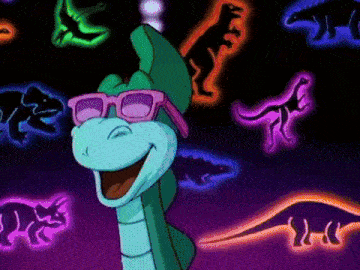

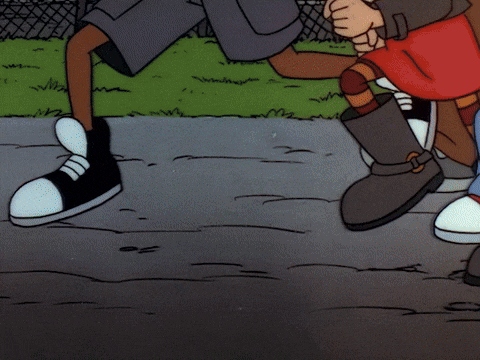

 Subscribe!
Subscribe!